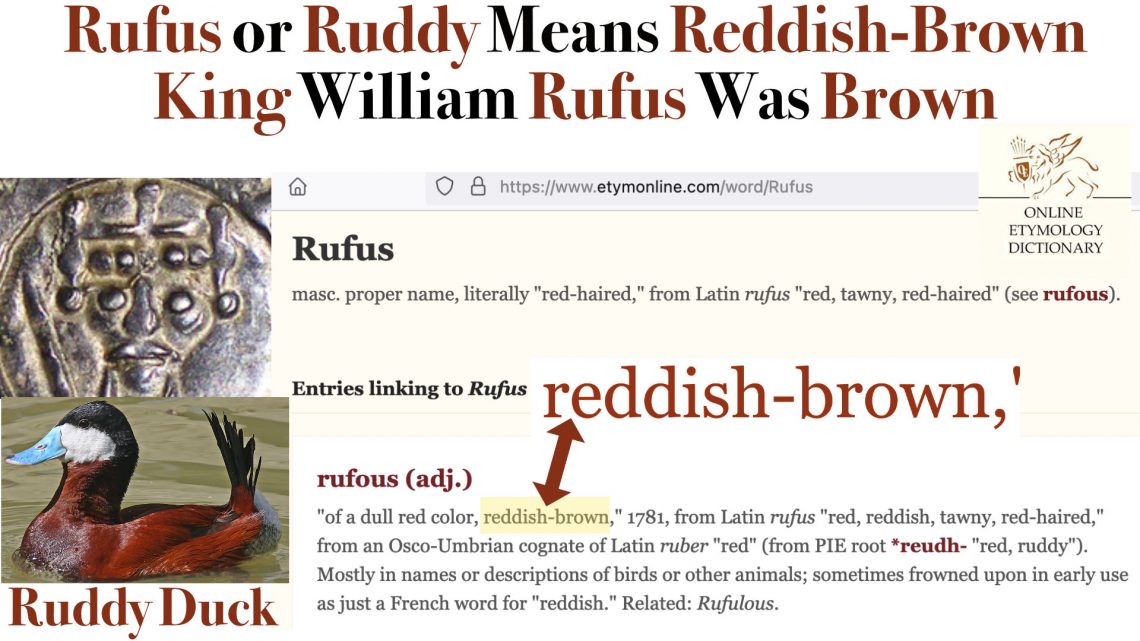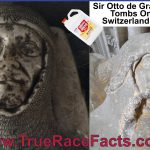1087c. William II Rufus Norman King Of England
- Guinevere Jackson
- 10 August 2022
- 0 Comment
William II (Rufus), named for his brown, reddish ruddy complexion, byname French Guillaume Le Roux, (born c. 1056—died August 2, 1100, Hampshire, England, son of William I the Conqueror, King of England from 1087 – 1100; he was also duke of Normandy (as William III) from 1096 – 1100. He prevented the dissolution of political ties between England and Normandy. His strong-armed rule earned him a reputation as a brutal, corrupt tyrant. Under feudal custom, William I bequeathed his inheritance, the Duchy of Normandy, to his eldest son, Robert II Curthose and England was given to Rufus.

Note: Rufus means Ruddy. The term is in numerous old books describing nobles and ancient Europeans with reddish-brown skin, aka blacks. The deceivers changed the meaning in 1781 to include Caucasians with red blotchy skin. All ruddy animals are depicted with reddish brown and NEVER pink/red skin. If so, then a pig or flamingo should be termed, Ruddy.
Nevertheless, many Norman nobles in England wanted England and Normandy to remain under one ruler, similar to the EU. After Rufus succeeded to the throne, they conspired to overthrow him in favour of his elder brother Robert. Led by the Conqueror’s half-brother, Odo of Bayeux, the Earl of Kent, they raised rebellions in East England in 1088. Rufus was able to win the native English to his side by pledging to cut taxes and institute a more efficient government. This suppressed the insurgency, but the King failed to keep his promises. This led to a second baronial revolt in 1095, led by Robert de Mowbray, the Earl of Northumberland. This time William Rufus punished the ringleaders with so much brutality that no barons dared to challenge his authority thereafter. His attempts to undermine the control of the English church provoked resistance from the archbishop of Canterbury, St. Anselm, who was defeated and left the country for Rome in 1097. Rufus immediately seized the lands of Canterbury.

Problems at home, Rufus also engaged in military operations in Scotland, Wales, and Normandy. He compelled King Malcolm III of Scotland in 1091 to acknowledge his overlordship. Malcolm revolted in November 1093, but Rufus’ forces killed him immediately near Alnwick, Northumberland. Thereafter, Rufus maintained the Scottish kings as vassals, and in 1097 he subjugated Wales.
However, William Rufus’ chief interest lay in the recovery of Normandy from incompetent Robert. After waging war on Normandy for seven years (1089–96), Rufus reduced his brother to the role of a subordinate ally. When Robert left for a crusade to Isreal in 1096, he mortgaged his kingdom to Rufus, who quickly added Maine into his possession.
Rufus was shot in the back in 1100 with an arrow and killed while hunting in the New Forest in Hampshire, England. The incident was likely an assassination, and Rufus’ alleged slayer, Walter Tirel, lord of Poix in Ponthieu. He may have acted under orders from the King’s younger brother, Henry, who promptly seized the English throne as King Henry I.
“The wicked are estranged from the womb: they go astray as soon as they be born, speaking lies.”
Psalms-58:3 KJV
Coin Source: www.VCoins.com
Disclaimer: True Race Facts have made the long overdue honest determination that the King was dark brown, aka BLACK of the Hebrew, Shemitic negro race. Based on his facial phenotype, lips and thick braided hairstyle. Authentic original coins are the most accurate determination to identify the King because he would have approved the coins before they were hammered and issued. There are many ancient FAKE coins on the market, so beware when looking at coins. The deceivers made it their mission to cover up the dark ages, so even history should now be considered pseudo-history.













